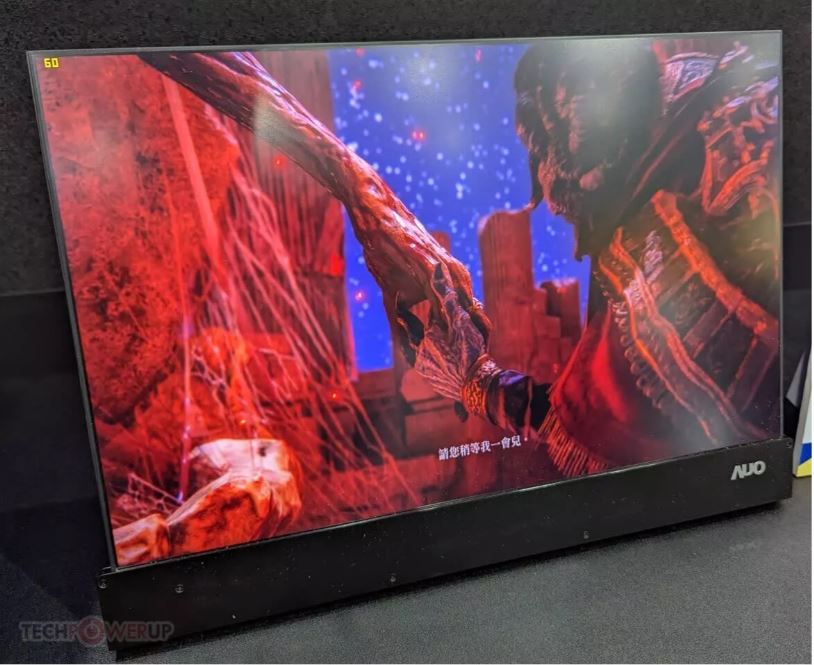The Taiwanese company is scrambling to move on from LCD tech

TechSpot is about to celebrate its 25th anniversary. TechSpot means tech analysis and advice you can trust.
In brief: microLED technology has a long way to go before it can compete with Mini LED and OLED, but AUO has more than 600 engineers working to make it cheaper to manufacture. Current prototypes leave a lot to be desired, but the company says it's burning the midnight oil to solve the remaining issues and will gradually shift manufacturing from LCD to microLED over the next few years.
Unless you've been living under a rock, you've probably heard about Mini LED and microLED, two of the most important breakthroughs in display technology in recent years. The first is a more advanced version of LCD where the backlight features a dense array of LEDs that enables OLED-like deep contrast levels (at the cost of blooming). The latter is more akin to OLED in that the image is directly produced by LEDs without the need for a backlight.
Mini LED has already made its way into some smart TVs as well as Apple's recent iPad Pro and MacBook Pro lineups. You can even get a 165 Hz 4K gaming monitor sporting Samsung's Quantum Mini LED tech for under $900, which is a relatively low price for a high-end monitor.

Image: Lit GaN microLED courtesy of Micledi Microdisplays
As for microLED, we have yet to see it integrated into a product you can buy. Apple is said to be using the tech in an upcoming Apple Watch, and Samsung so far has only used it to make a 165-inch folding TV for lottery winners. Others like Micledi Microdisplays and Kura Technologies are focused specifically on perfecting microLED for augmented reality glasses, some of which will break cover later this year.
It's not for lack of trying – display companies have been experimenting with microLED for anything from digital signage to smartwatches and everything in between. This week at the Touch Taiwan event, AUO showed off multiple proof-of-concept products that integrate microLED screens and while they do look impressive, they also prove the tech isn't quite ready despite being in development since 2012.

One of the prototypes is a laptop with a foldable, 14.6-inch display that can reach a maximum brightness of 2,000 nits and can be set from opaque to semi-transparent (up to 60 percent transparency) – all great qualities, at least on paper.

The kicker is the resolution, which is a measly 1,280 by 720 – that would have been unimpressive 10 years ago, let alone today. Oddly enough, the company also demoed a 17.3-inch display with great anti-glare capabilities but with the same low resolution as the smaller sibling.

AUO says it's still working on perfecting its microLED tech, and the prototypes show it is very much a work in progress, with multiple dead pixels visible in some demos. The company also promises to unveil higher resolution microLED displays in the not-too-distant future. For now, it only had to show a 1.39-inch display for smartwatches with a density of 326 pixels per inch.

Separately, AUO also demoed 18-inch and 16-inch AmLED laptop displays. AmLED is the Taiwanese company's version of Mini LED, and this time we're talking about a resolution of 2,560 by 1,600 – something that will work great for machines designed to be used for productivity. They can reach a peak brightness of 1,000 nits and support the full DCI-P3 color gamut, with a maximum refresh rate of 240 Hz.
In related news, AUO announced it will gradually convert its existing LCD fab in Taoyuan's Longtan District into a microLED facility over the next two years. With companies like Samsung and LG also moving on from LCD tech, the Taiwanese company expects manufacturing costs for Mini LED panels to drop by 50 percent every two years, which would greatly improve its chances of success against OLED and Mini LED alternatives.
2023 Global LED Video Wall Market Outlook and Price Cost Analysis
Release Date: 28 September 2022
Language: Traditional Chinese / English
Format: PDF
Page: 238
TrendForce 2022 Micro LED Self-Emissive Display Trends and Analysis on Supplier's Strategies
Release date: 31 May 2022 / 30 November 2022
Format: PDF
Languages: Tradional Chinese / English
Pages : 130–150 in total (subject to change)
If you would like to know more details , please contact:











